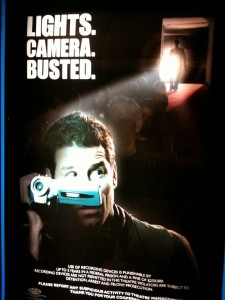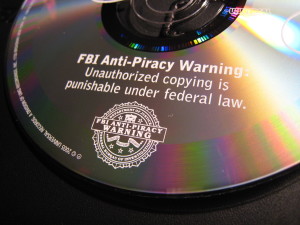
“I’m very, very depressed.”
“I gave it out to six people. If I can’t trust them to that degree, then I have no desire to make it.” These are the heated words of renowned director Quentin Tarantino shortly after his Hateful Eight script leaked online last month. The director announced plans to shelve the ensemble Western until further notice and is suing Gawker for publishing links to the leaked script. No watermark on the script means the actual source of the leak will likely never be determined.
Few directors have the influence that Tarantino does where a script can cause such an enormous uproar, long before his ideas are cut to film. This particular example demonstrates that a mere six people can be provided with sensitive material, and all it takes is one to cause pandemonium. This story and the rapid approach of the 86th Academy Awards got me thinking: what is the anatomy of a movie leak? How does this happen? The answer: very easily.
Common Movie Leak Formats
A Tarantino script leak is just scratching the surface of Hollywood’s greatest challenge: addressing piracy. The act of sharing and downloading copyrighted movies over the Internet both before and after they arrive in theaters continues to be a growing pain for industry executives. The MPAA’s controversial study claims that the movie industry lost $1.3 billion in box office revenue in 2006. One 2009 study estimates that $60 – $75 million is spent on movie anti-piracy budgets annually. Many leaks are internal, when a friend or family member of an Academy Awards judge copies the screened DVD online. Plenty of other films pop up online in digital camcorder format.
When a movie gets leaked, anyone with an internet connection has the means to stream or download it without making the trip to the local movie theater. Without going into the damage piracy causes, I want to explore the different ways that material is shared illegally. These formats are uploaded to file-sharing sites and are copied millions of times once released online.
- [CAM] Camcorder I always think of Kramer’s associate with the bulky video camera recording bootlegs on this episode of Seinfeld. The quality of video recording devices has gone up quite a bit since then, making camcorder recordings better and better looking and causing a huge problem for film distributors. Enough of a problem where the FBI interrogated a Google Glass wearer in Columbus, OH. Problems with cam recordings are obvious: sound in the theater (laughter, coughing) and shakiness can make these pretty unwatchable. The MPAA has also suggested night vision goggles be worn by theater employees to pinpoint bootleggers. Seriously.
- [TS] Telesync Often mislabeled as cam recordings, telesyncs have a direct audio jack recording and are typically filmed in the projection booth. Sound can be improved, but the picture can still be shaky or uneven and varies drastically among copies. This is a less common leak format than others.
- [TC] Telecine – A telecine is copied digitally from the film reels themselves. Sound and video is high quality, but these are uncommon due to the cost and specialized equipment required to copy film to digital.
- Screeners – VHS or DVD copy of the film, sent directly to Oscars voters and others involved in production before wide release. The main downside is the “ticker” that scrolls across the bottom of the screen. It usually reads “for promotional purposes only” or something along those lines. Screener leaks are very common; so common, in fact, that 82% of this year’s Oscar contenders are currently available online for illegal download. Interestingly enough, the gap between screener release and leak has grown from a few days to a few weeks over the last decade.
- [DVDRIP] Rips – This format is the burning of a retail release DVD, Blu-Ray disc, or streamed video to a computer to be shared later. Sound and audio are usually great, though rips typically occur after the movie has left theaters. Rips have less leak value than an early screener leak, but still are a free way to view a movie rather than buying or renting.
The Elephant in the Theater
Being so widespread, movie piracy needs to be acknowledged as an inevitable distribution format rather than a mortal enemy. Understanding the forms that different movies take on when leaked is a crucial step in evaluating how to address piracy more effectively. Screened copies and camcorders are major culprits of post-production leaks, so it’s important to explore modern film distribution methods and the way that industry insiders pass around unreleased films. Specifically, how a DVD screener arrives in the hands of one of the 6000 Oscar judges and not his/her family members.
If leaks are “bound to happen,” shouldn’t copyright enforcers be looking at the distribution methods of pre-release collaboration rather than scanning IP Addresses for offenders after the fact? Industry insiders are not bad people, and creative collaboration is an essential element for harnessing a film’s maximum impact. The anatomy of a leak and the ensuing damage beg for deeper analysis. One thing is certain- filmmakers want to get their work in front of as large an audience as possible. It’s time for insiders to embrace new film review technology to make that happen.
Please don’t hesitate to start a discussion below; I’d love to hear your opinions about the future of film distribution, as well as your thoughts on anti-piracy legislation.



Comments are closed.